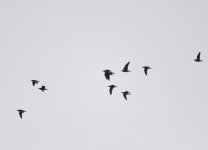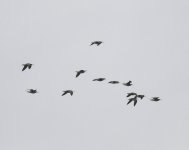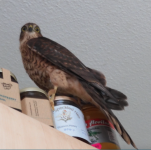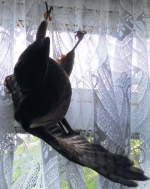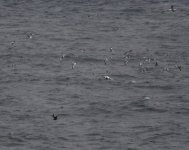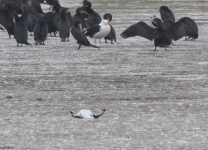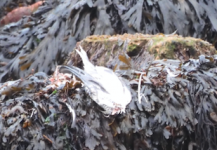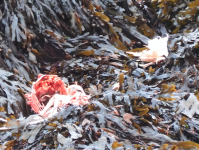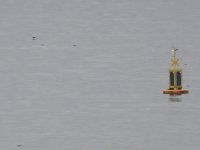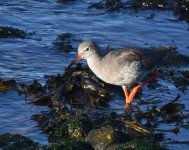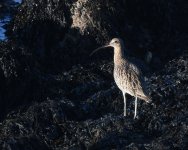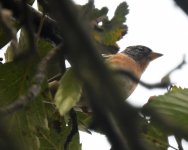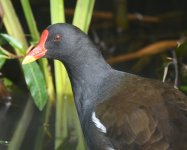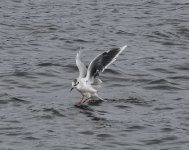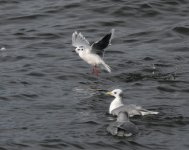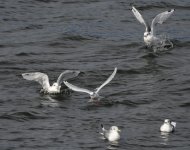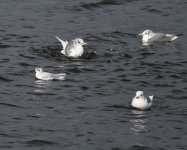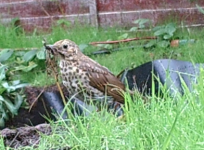It was a fairly pleasant afternoon today, with some sun coming out and a light SE breeze. I had a leisurely wander along the north side, seeing a Dunlin and a couple of Wheatears in Greyhope Bay. Two Knot were again on the pier below the foghorn.
Given recent evenings, I thought it would be worth seawatching, particularly as the wind had now switched to the east. There wasn't much moving initially, although a sub-adult Arctic Skua appeared on my first scan. For about 25 minutes or so, things were quiet and I half wondered about giving up. I'm glad I didn't because the next couple of hours were the best seawatching I've ever had at Girdle Ness.
First up was a small juvenile skua heading north about a kilometre out. The slim build, light flight and whitish belly identified it as a pale phase juvenile Long-tailed Skua. A nice adult Little Gull went north soon after and the first of six Sooty Shearwaters also flew north at fairly close range. A moulting Black Guillemot was on the sea near the shore.
Nearly an hour later, another small skua headed north, a bit further out than the first. The flight and shape were very similar but this was a dark phase juvenile Long-tailed Skua. Craig Gordon had arrived by this stage and then Ian Broadbent turned up. It was around this time that things got a bit crazy. At about 6.40, Ian said he had a 'seabird' heading north. There was touch of excitement in his voice. We couldn't initially see it but he said he'd let us know when it came in line with the large yellow buoys offshore. I picked up the bird just as it flew behind the furthest one. It was immediately clear that this was something different. 'Tell me what you can see,' asked Ian. After following it for a bit and seeing the distinctly dark underwings, I said it looked like a Fea's Petrel. I was able to follow as it headed steadily but swiftly north for another 3 or 4 minutes. Seemingly, the calm conditions meant it was much easier to see than the bird on Monday. Amazing stuff.
About five minutes later, Craig pointed out two shearwaters heading north. When I got onto them, I could see one was a Manx Shearwater but the other was slightly but distinctly larger and chunkier. After watching it for a bit longer, it was clear that it was almost entirely dark brown with a touch of white on the belly. It was my second ever Girdle Ness Balearic Shearwater.
Other totals included six Bonxies, three Arctic Skuas, 13 Manx Shearwaters, five Puffins, ten Arctic Terns, three Common Scoters and a Whimbrel.





